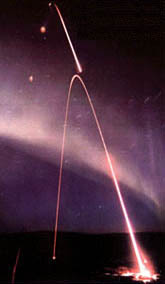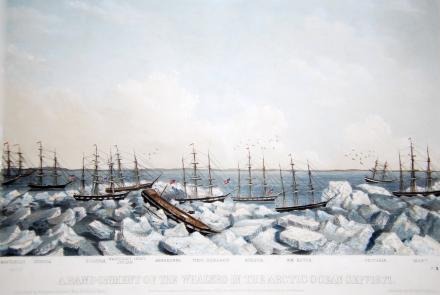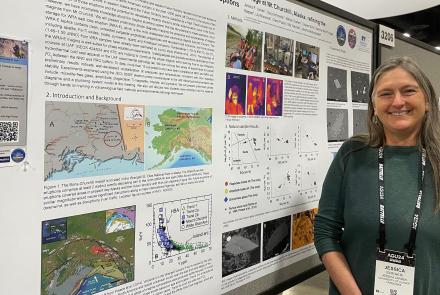
Alaska's Space Pyrotechnics
Before the last holiday season, there was considerable advance publicity about an artificial "Christmas comet" which was to be produced by the injection of barium crystals into space from a satellite in high earth orbit. Alas, even though the experiment was a success and faintly glimpsed by some observers to the south, it was never seen in Alaska.
However, since the mid-1970s, similar experiments have become old hat to Geophysical Institute researchers and other scientists from around the world who have been launching barium payloads into the aurora from the Institute's rocket range at Poker Flat north of Fairbanks. The primary difference between the Christmas comet experiment and those performed at Poker Flat is that the former was intended to observe the solar wind, while the latter, where the observations are made closer to earth, provide information relating primarily to the earth's magnetic and electric fields.
Typically, a barium-release experiment at Poker Flat involves explosively ejecting two or more charges of barium vapor into space from altitudes ranging from auroral heights (about 60 miles) upward to 500 miles or more. The barium is expelled at a high velocity from the rocket by a "shaped charge," made by molding an explosive around a conical hollow. (These devices were designed during World War II to penetrate armor and concrete with a high-speed jet of molten metal from projectiles fired from weapons such as the "bazooka.")
One of the objectives of the Poker Flat rocket shots has been to trace magnetic field lines of the earth by propelling barium metal vapor along them. The barium is ejected when the rocket is high enough so that it is in the sunlight and the earth below is in darkness. The vapor first disperses to form a bright yellow-green cloud about the size of a full moon. In a matter of seconds, it changes to a reddish-purple color as it is ionized by the sunlight and evolves into a series of long, parallel rods aligned along the magnetic field lines, approximating an auroral form. These drift away under the influence of the earth's electric field, and can be tracked for an hour or more by sensitive photographic imaging systems on the ground.
In Alaska, these experiments have an important bearing on understanding the behavior of auroral displays. It is known that auroras are caused when electrons and protons from the solar wind spiral down the earth's magnetic field lines, ionizing oxygen and nitrogen molecules as they go. By tracing abnormal accelerations or decelerations of the streaks of ionized barium, researchers are able to measure the additional effects on the tracks of incoming particles caused by the earth's electric field.
Regardless of the scientific rationale behind these experiments, the rocket launches are spectacular to behold, and the brilliantly colored clouds which they produce can be seen in the night skies all across Alaska and western Canada whenever a barium "shot" is fired from Poker Flat.
Image Caption cont: The rocket's first stage fell to the ground 0.8 mile from the launch site, while the second and third stages propelled the first barium canister to a height of 550 miles. The second injection occurred shortly thereafter at the lower altitude. Star tracks appear as streaks because of the seven minute time exposure.






